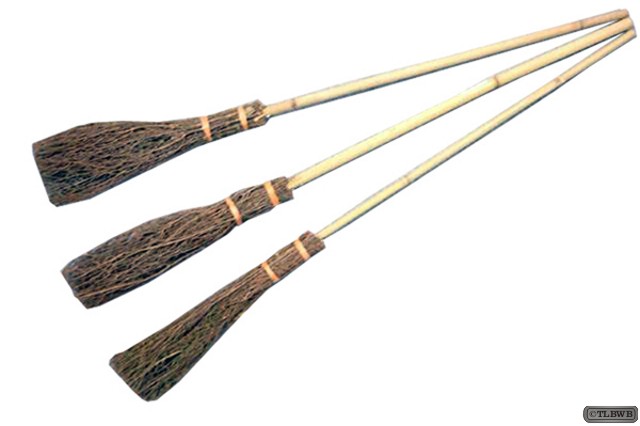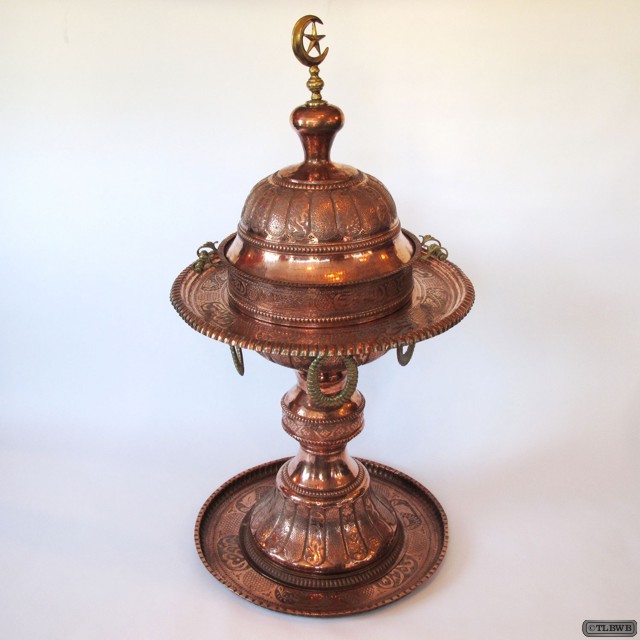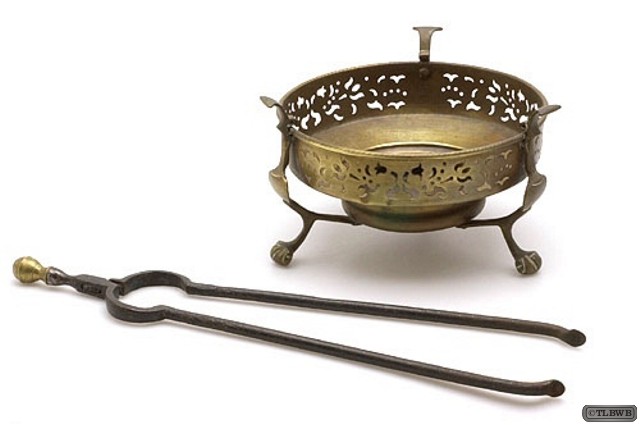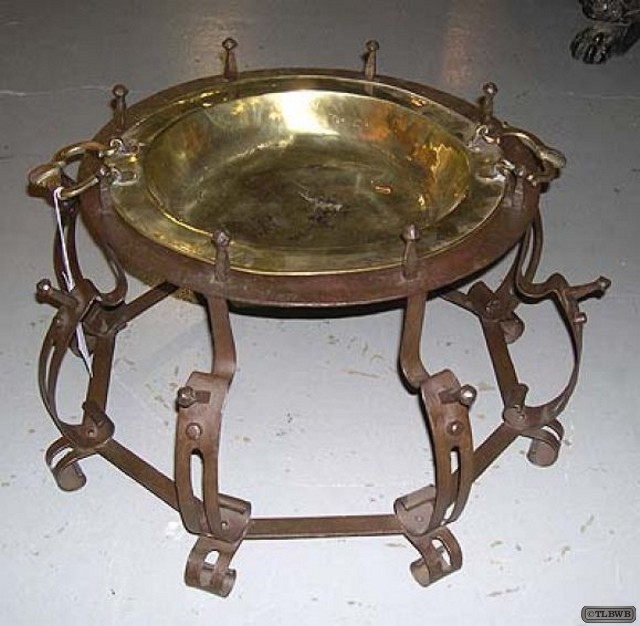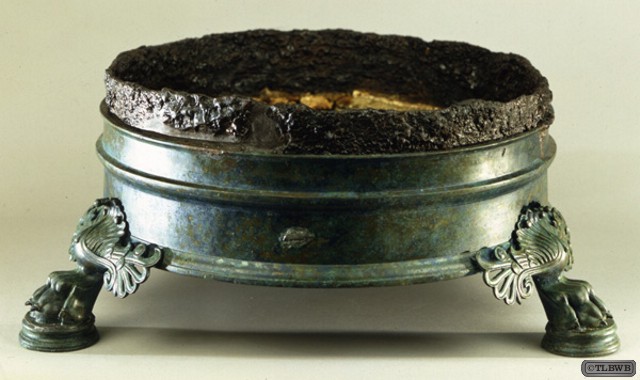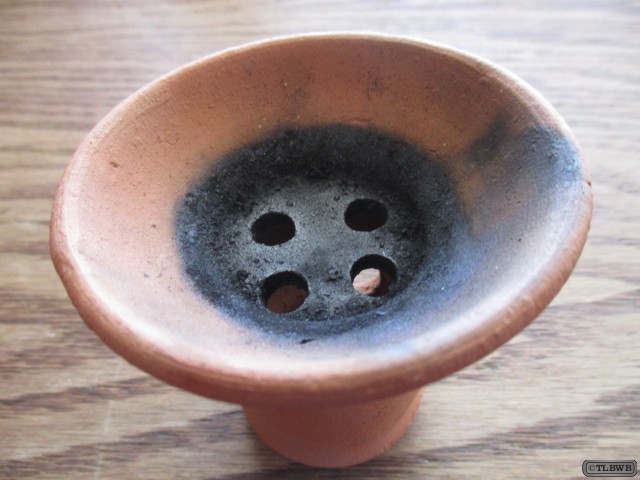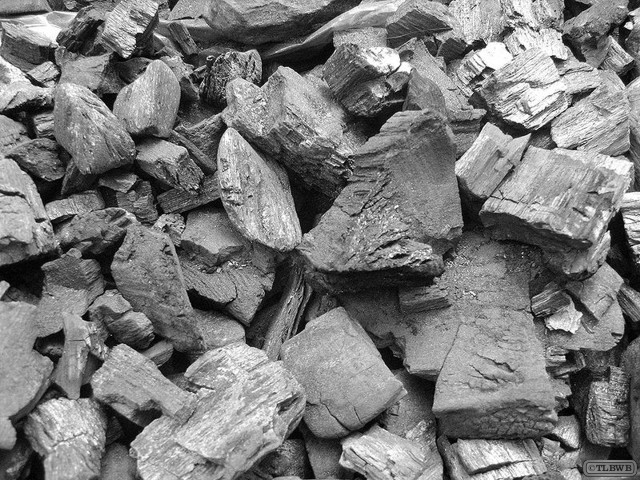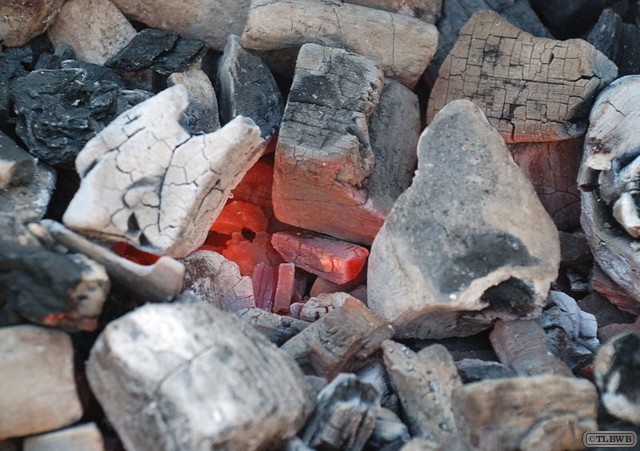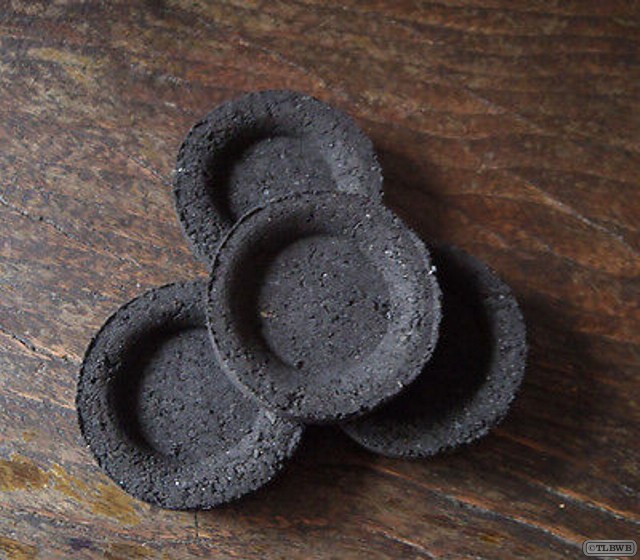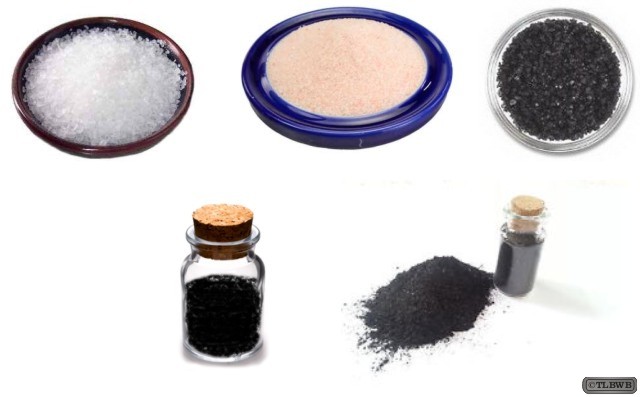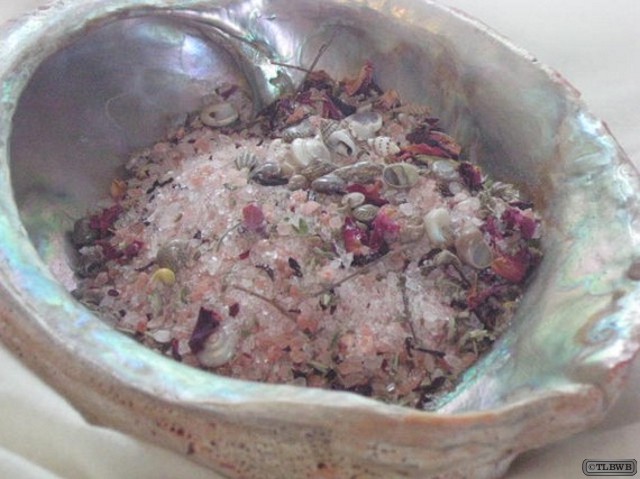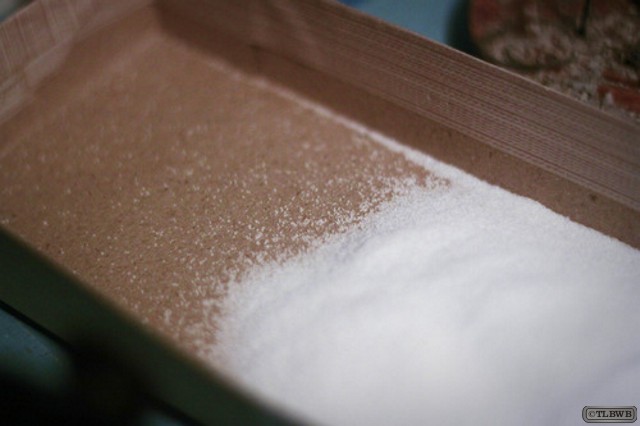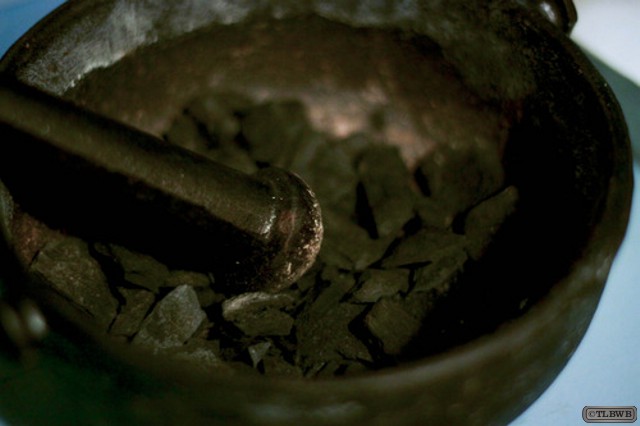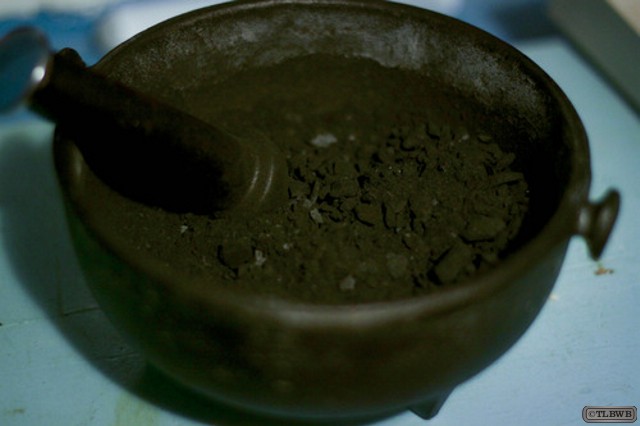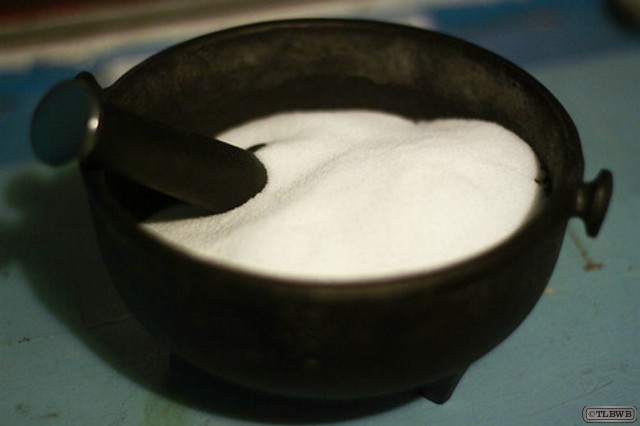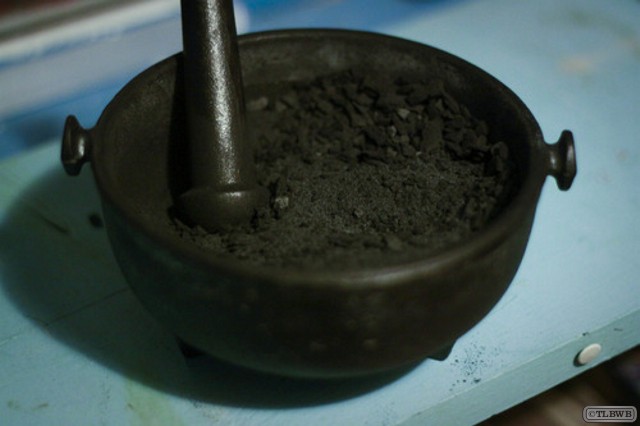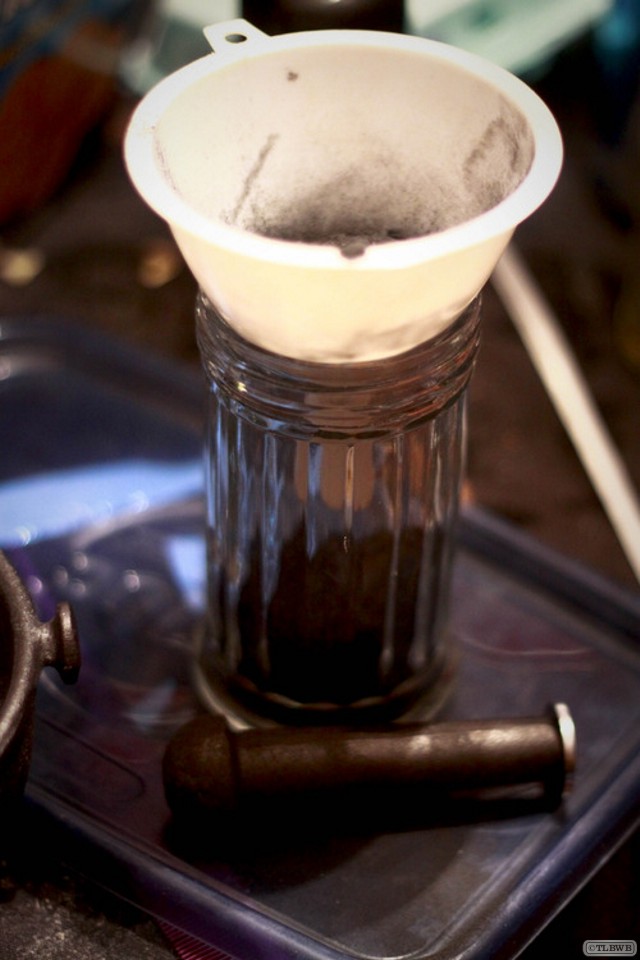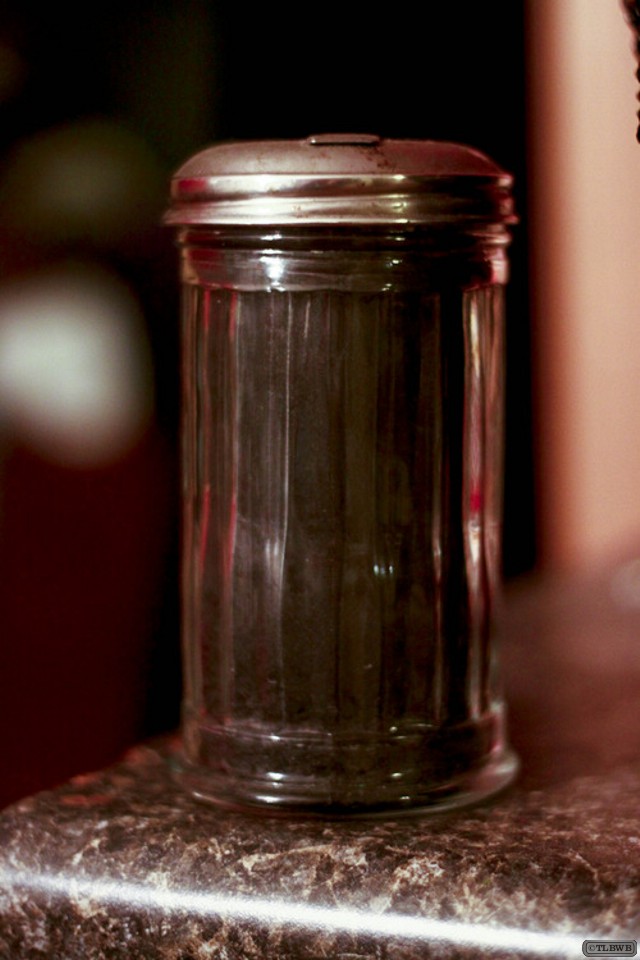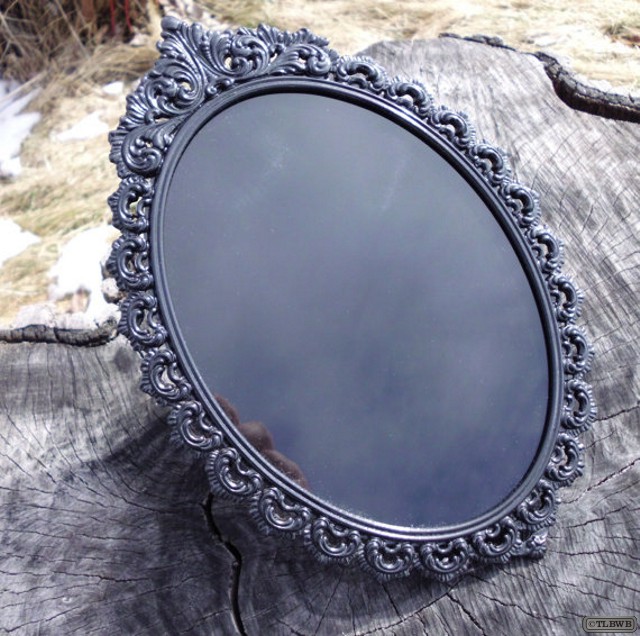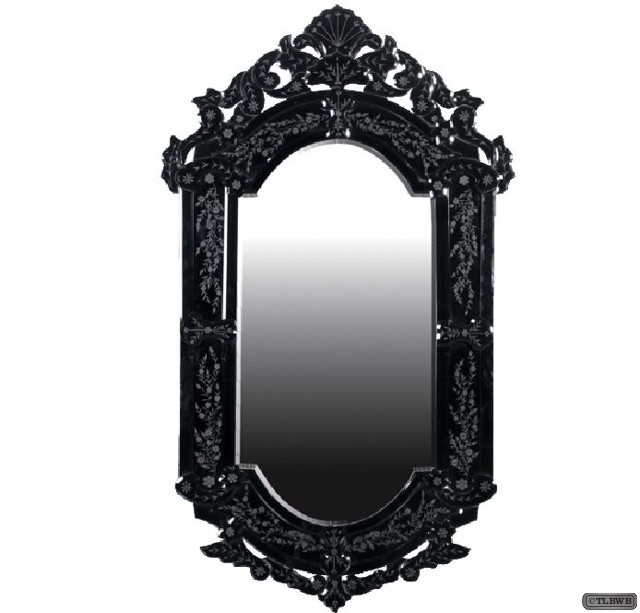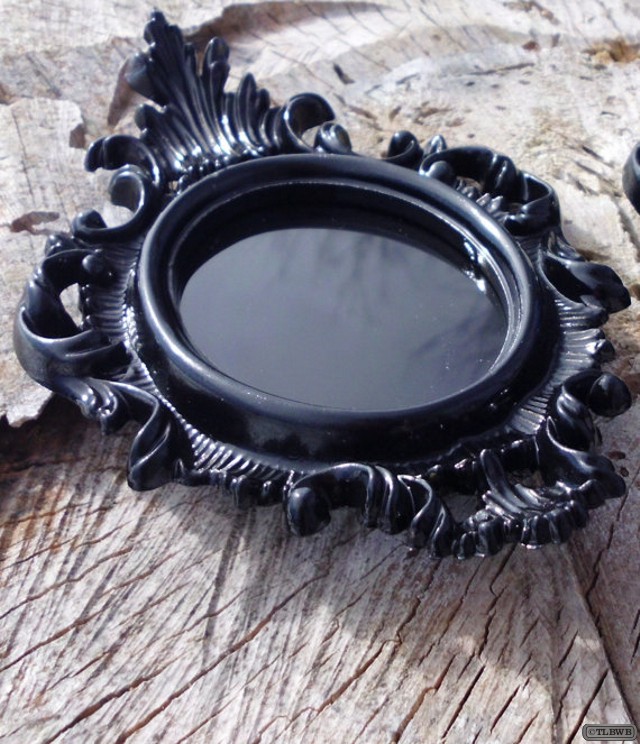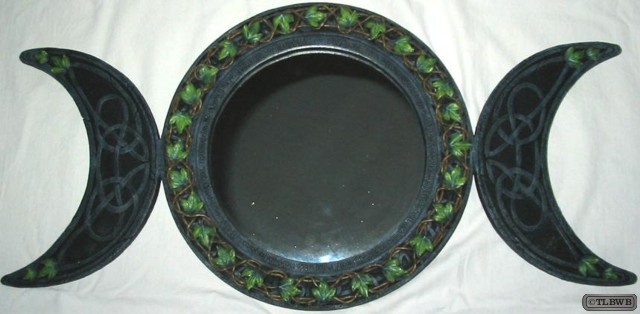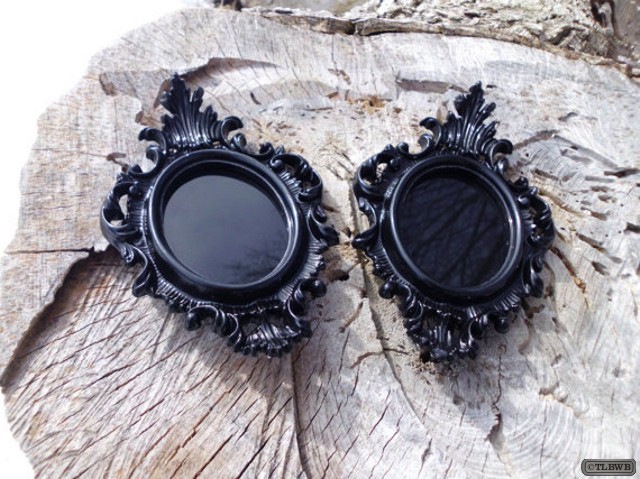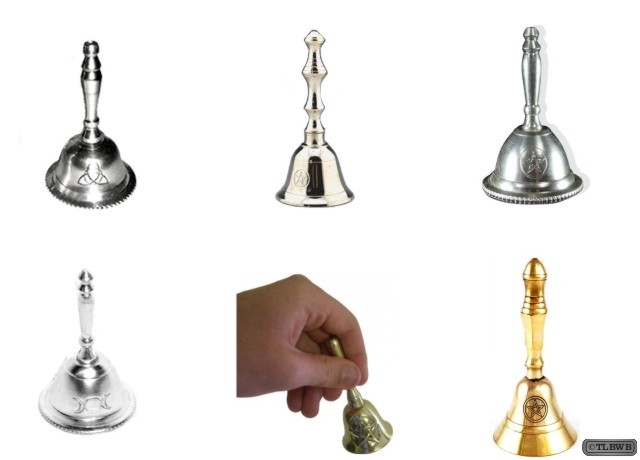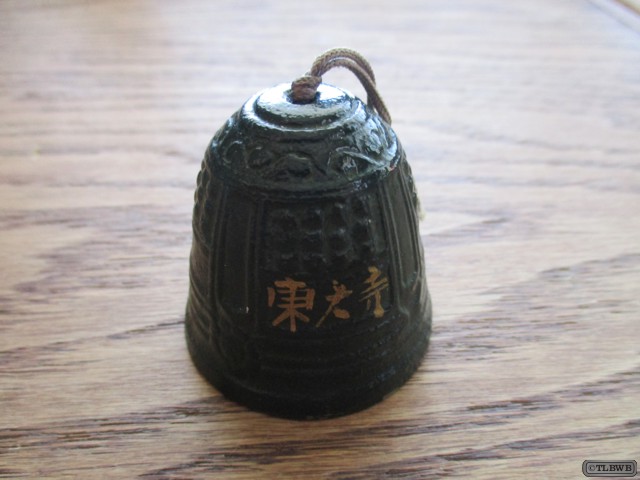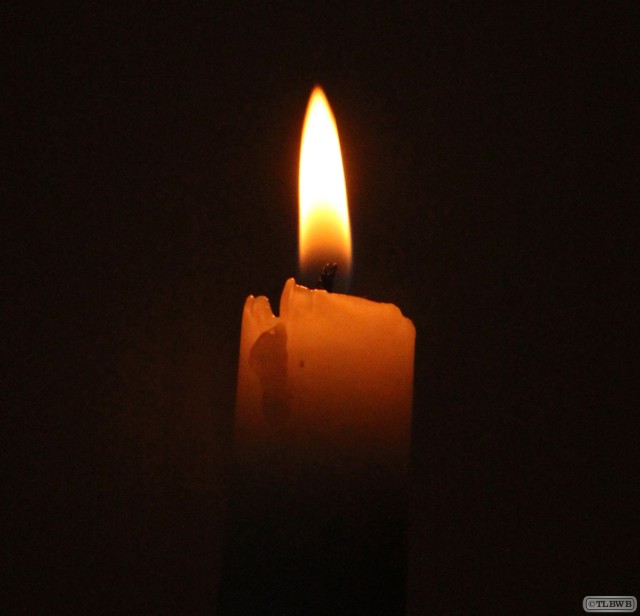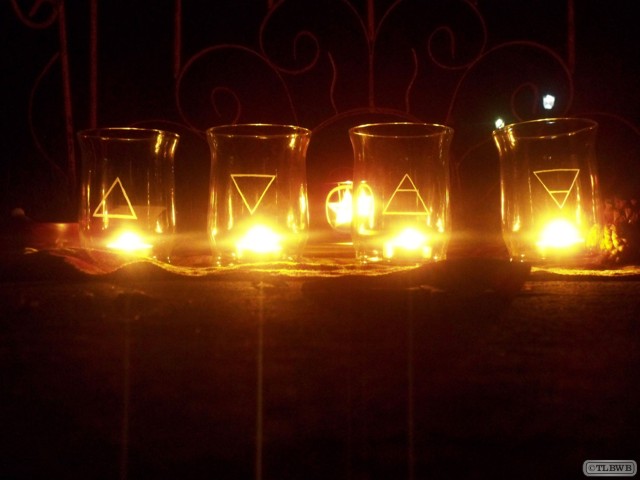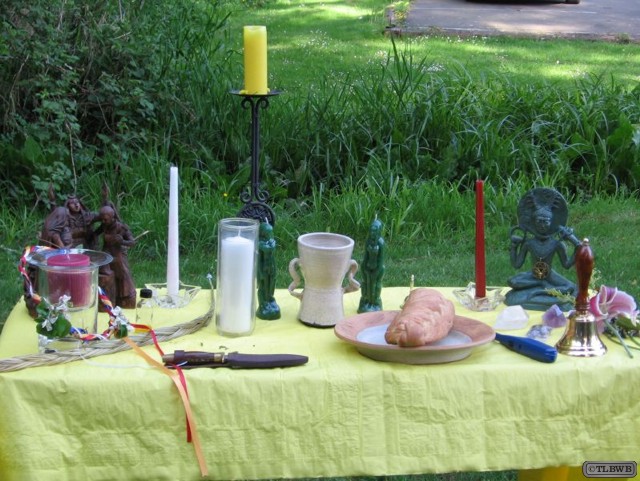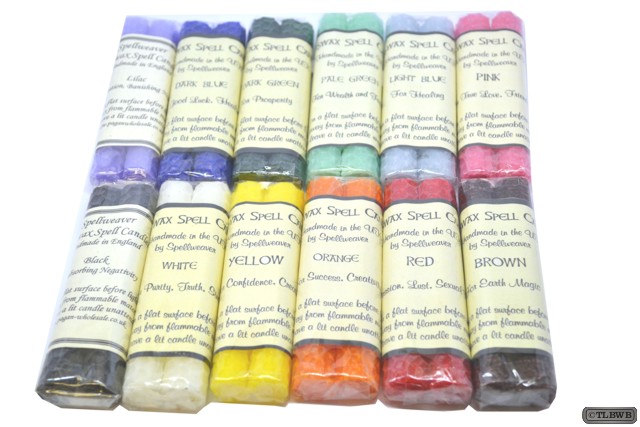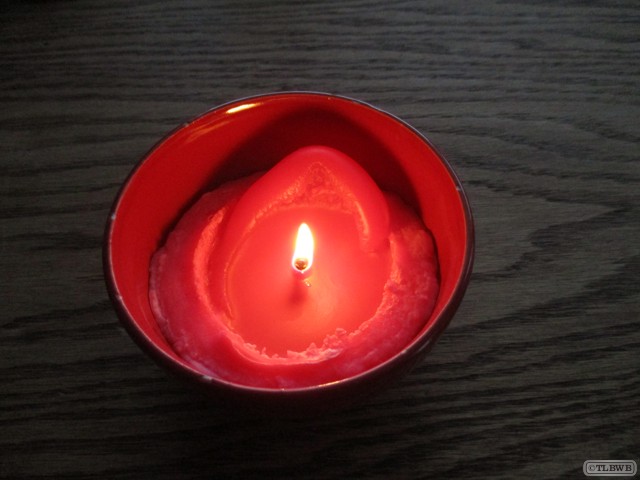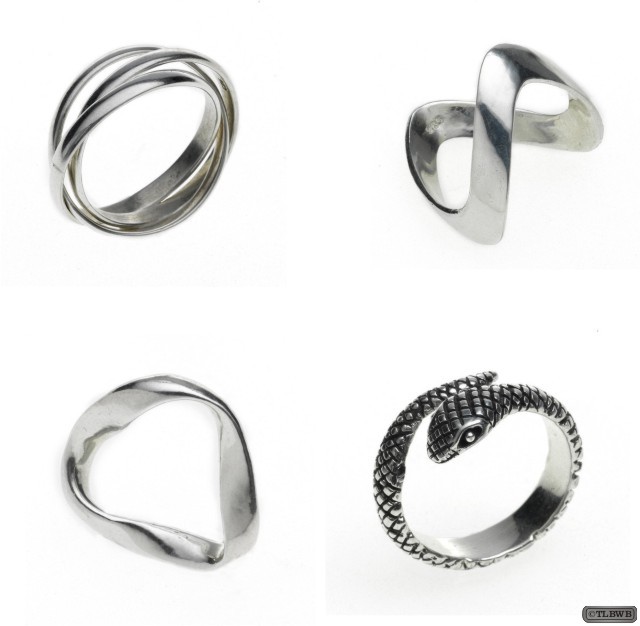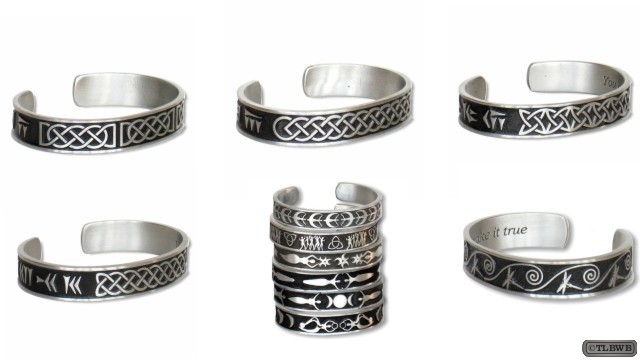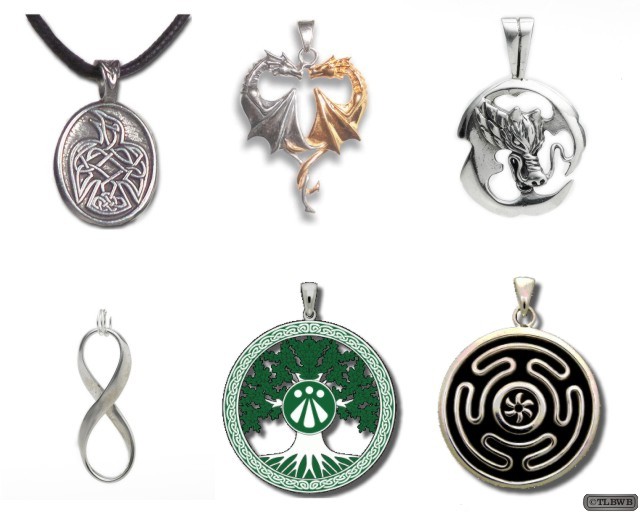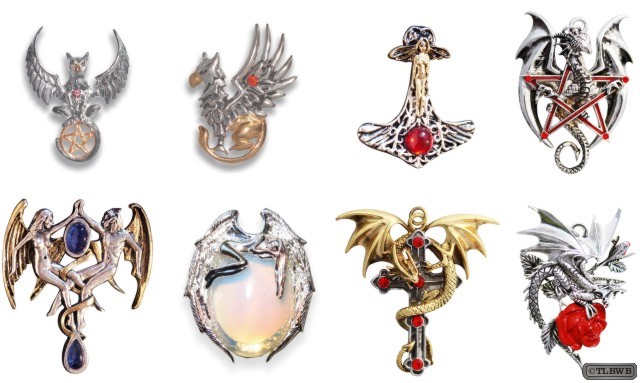Magical
Magical
Broom
A broom is a cleaning tool consisting of usually stiff fibers (often made of materials such as plastic, hair, or corn husks) attached to, and roughly parallel to, a cylindrical handle, the broomstick. It is thus a variety of brush with a long handle. It is commonly used in combination with a dustpan.
Magic
In the context of witchcraft, broomstick is likely to refer to the broom as a whole, known as a Besom. The first known reference to witches flying on broomsticks dates to 1453, confessed by the male witch Guillaume Edelin. The concept of a flying ointment used by witches appears at about the same time, recorded in 1456.
The Métis people of Canada have a broom dancing tradition. There are broom dancing exhibitions where people show off their broom dancing skills. The lively broom dance involves fast footwork and jumping.
Besom
Besom is a dialectal or historical word for what is now known as a broom, a household implement used for sweeping. The term “besom” is now mostly reserved for a “traditionally constructed” broom, made from a bundle of twigs tied to a stouter pole. The twigs used could be broom (i.e. Genista, whence the modern name “broom” for the tool), heather or similar. The song “Buy Broom Buzzems” from Northern England refers to both types of twig. From the phrase broom besom the more common broom comes.
Description
As a result of its construction around a central pole, the brush of the besom is rounded instead of flat. The bristles can be made of many materials including, but not limited to straw, herbs, or twigs. Traditionally the handle is of hazel wood and the head is of birch twigs. Modern construction uses bindings of wire and string (instead of the traditional split withy) and the head is secured by a steel nail instead of a wooden dowel.
In Wicca
A besom is a flight tool used in Wicca. A traditional Wiccan besom is an Hawthorn stave handle with bristles made from birch twigs. These twigs are tied on using thin pieces of willow wood. It is used to cleanse the ritual area before circle casting. As a tool, the besom is usually thought of as masculine in nature due to its phallic shape and symbolism. However the besom’s components are of both masculine and feminine orientation. The handle, an ash stave, is masculine in nature while the birch used for the bristles is thought of as feminine in nature. The besom is thought to be involved with fairies.
The besom is an important part of Wiccan handfasting ceremonies in some traditions. The couple jump over the besom during the ceremony. Alternatively, the couple may jump over a small bonfire.
The Lost Bearded White Brother
A brazier is a container for fire, generally taking the form of an upright standing or hanging metal bowl or box. Used for burning solid fuel, braziers principally provide heat and light, but may also be used for cooking and cultural rituals. Braziers have been recovered from many early archaeological sites, for example the Nimrud brazier recently excavated by the Iraqi National Museum, which dates back to at least 824 BCE.
History
Braziers are mentioned in the Bible. The Hebrew word for brazier is of Egyptian origin, suggesting an invention imported from Egypt. The only reference to it in the Bible is in Jeremiah 36:22-23, where braziers heat the winter palace of King Jehoiakim. In some churches a brazier is used to create a small fire, called new fire, which is then used to light the Paschal candle during the Easter Vigil.
The Roman Emperor Jovian was poisoned by the fumes from a brazier in his tent in CE 364, ending the line of Constantine. But despite the risks associated with burning charcoal on open fires, braziers were widely adopted as a source of domestic heat, particularly in the Spanish-speaking world. Fernando de Alva Cortés Ixtlilxochitl notes that the Tepanec Tlatoani in New Spain slept between two braziers because he was so old he produced no natural heat. In many areas they used to be considered healthier than fireplaces and chimneys, and continued to be one of the primary means of heating houses in Spain until the early 20th century. Gerald Brenan described the widespread habit in Spain in the 1920s of placing a brazier beneath a cloth-covered table to keep the legs and feet of the family warm on winter evenings.
When burned moist, rose and grapevine trimmings produce a pungent, sweet-smelling smoke, and make very good charcoal. When the charcoal fumes became overbearing, however, aromatics (lavender seeds, orange peel) were sometimes added to the embers in the brazier. A brazier used exclusively for burning aromatics (incense) is known as a censer or thurible.
A brazier holds a base layer of charcoal, over which loose incense can be sprinkled, and will produce more copious smoke than an open censer. A ventilated cover is common on brazier-styled censers, especially if you happen to find a Far Eastern design.
The Lost Bearded White Brother
Charcoal is a light, black residue, consisting of carbon and any remaining ash, obtained by removing water and other volatile constituents from animal and vegetation substances. Charcoal is usually produced by slow pyrolysis, the heating of wood or other substances in the absence of oxygen (see char and biochar). It is usually an impure form of carbon as it contains ash; however, sugar charcoal is among the purest forms of carbon readily available, particularly if it is not made by heating but by a dehydration reaction with sulfuric acid to minimise the introduction of new impurities, as impurities can be removed from the sugar in advance. The resulting soft, brittle, lightweight, black, porous material resembles coal.
Wiccan Charcoal
Long-burning, easy lighting charcoal tablets for use with incense burners, resin incenses, and powder incenses. Packaged in foil tubes, well sealed against moisture & dust. Charcoal for ritual and incense burning is a must have. Traditionally used in churches to burn incense within their services, you can use these self-igniting disks for your own purposes. Do you prefer loose or resin-type scents and smokes? Then these briquettes are convienent items to have in your witch’s bag! Our charcoal and charcoal accessories are sure to provide everything you need in your special and everyday practice.
Historically used as an antidote to poisoning – it actually absorbs the poisons – activated charcoal is great for removing toxins, both psychic and physical. In this manner, it works very well for purification rituals. It is known for its cleansing and protective abilities and is used to render a harmful situation neutral. It is also a commonly used incense ingredient to aid in burning.
How to use charcoal discs:
- You will need a heat proof plate or dish.
- Charcoal disc.
- Using a pair of tweezers or similar hold the charcoal disc, as they tend to light better this way I have found. (please do not use your fingers)
- Hold the flame to the edge of the charcoal disc, the disc will ignite and start to spark across the surface.
- Place the charcoal disc, well side up, onto your heatproof dish. Wait about 3 mins for your charcoal disc to heat up, you will see it turning grey.
- Now you are ready to add your incense to the well of the disc.
Charcoal discs get very hot so never hold directly when lighting. Always make sure the disc is completely cold before disposing of. Keep away from children and pets. Never leave unattended.
The Lost Bearded White Brother
Common salt is a mineral composed primarily of sodium chloride (NaCl), a chemical compound belonging to the larger class of salts; salt in its natural form as a crystalline mineral is known as rock salt or halite. Salt is present in vast quantities in seawater, where it is the main mineral constituent; the open ocean has about 35 grams of solids per litre, a salinity of 3.5%. Salt is essential for animal life, and saltiness is one of the basic human tastes. The tissues of animals contain larger quantities of salt than do plant tissues; therefore the typical diets of nomads who subsist on their flocks and herds require little or no added salt, whereas cereal-based diets require supplementation. Salt is one of the oldest and most ubiquitous of food seasonings, and salting is an important method of food preservation.
Some of the earliest evidence of salt processing dates to around 8,000 years ago, when people living in Romania were boiling spring water to extract the salts; a salt-works in China has been found which dates to approximately the same period. Salt was prized by the ancient Hebrews, the Greeks, the Romans, the Byzantines, the Hittites and the Egyptians. Salt became an important article of trade and was transported by boat across the Mediterranean Sea, along specially built salt roads, and across the Sahara in camel caravans. The scarcity and universal need for salt has led nations to go to war over salt and use it to raise tax revenues. Salt is also used in religious ceremonies and has other cultural significance.
Wiccan Salt
“Salt! Oh, salt. Okay, consider me braced.”
So, in folklore, salt has always been a way of warding off “evil spirits”. It was always thought that a ring of salt around a area would protect it.
Salt has also been thought of as an energy absorber. This is why people often use it to cleanse ritual space. These two reasons contribute most to the tradition of putting a ring of salt around a ritual a read. A circle of salt around an area prevents negative entities and demons from crossing into it. You can make a line of salt along a door or windowsill to make it impassable.
I’ve found that the most common tool recommended is salt, and I trusted this information because it was generally agreed upon by the magical community. I believed this until it was tested, and it failed. I guess that’s the way all things work.
So I did some research and I did some testing, and most of all, I did some thinking. Salt is normally used as the physical representation of the circle, it is used in cleansing solutions for tools, it’s used to protect against anything that goes bump in the night, but why is it used for all of these things?
Many different magical traditions call for the use of salt in spells and ritual. For centuries, it’s been known as a very magical – and also very valuable – ingredient. But why is salt such a magical item? Let’s look at some of the history behind the use of salt in magic, and some of the ways it’s commonly used in folklore and legend.
In many Eastern belief systems, such as Buddhism and Shintoism, salt is used both as a purifier and to repel evil.
In parts of Germany, Normandy, and Scotland, salt is used in or around a butter churn to keep witches from souring the butter or harming the cow from which the cream was obtained.
Irish folk remedies include the use of salt, combined with a recitation of the Lord’s Prayer, to cure those who might have been “fairy-struck”. A similar story comes from Bavaria and the Ukraine, in which salt is used to determine if a child is bewitched.
Egyptian caravans setting out on a journey across the desert used to perform a ritual that involved burning salt on hot coals. This was done to ensure that evil spirits wouldn’t get in the way of the travelers.
Often, salt is used in purification spells. It can be incorporated into smudging and asperging, and in some NeoWiccan traditions it is used on the altar to represent the element of earth. It should be noted that some groups associate salt with water, because of its origins in the sea.
Wiccan Black Salt
Black salt, which is a blend of regular salt and other ingredients, is used in protection magic in some traditions. Now I know you are asking yourself. “Witch… Why would I need black salt when Supernatural shows us that plain salt is just fine?”
Well, Let me Explain.
Black Salt is normally used to banish or drive away negative things. It can be used to protect your home and garden area by sprinkling it around the property line. To protect from things general getting in your house you can put Black Salt in the corners of the room or across the door step. It is also used to remove negative spells that have been cast on a person. In general, Salt itself is a great purifying agent. Black Salt is more about protection and the banishment of all things negative.
You can use anything dry that has a black tone. Charcoal, Ashes, Scrapings from your cauldron/cast iron bowl or skillet, even Pepper is often used.
The Lost Bearded White Brother
A mirror is an object that reflects light in such a way that, for incident light in some range of wavelengths, the reflected light preserves many or most of the detailed physical characteristics of the original light. This is different from other light-reflecting objects that do not preserve much of the original wave signal other than color and diffuse reflected light.
Mirror Magick
Samhain is a time to do some serious divination – it’s the time of year when the veil between our world and that of the spirits is at its thinnest, and that means it’s the perfect season to look for messages from the metaphysical. Scrying is one of the best known forms of divination, and can be done in a variety of ways. Basically, it’s the practice of looking into some sort of reflective surface — such as water, fire, glass, dark stones, etc. — to see what messages, symbols, or visions may appear. A scrying mirror is a simple black-backed mirror, and it’s easy to make one yourself.
Any mirror can be enchanted by the Sun to become a magick mirror. They can be portals into other realms, they can be used for divination, or for spells, and they can be used to reflect a spell back onto the sender. I personally don’t recommend using a mirror to reflect baneful energy back to the sender and I wouldn’t post a spell that can cause harm to another.
Why not use a mirror to reflect back baneful energy? Here are some reasons:
- 1. Sometimes, the problems we are encountering are not actually being created by an outside force, but are manifestations of unhealthy habits or thoughts from within ourselves. If you use mirror magick to reflect back the unwanted energy to it’s source, then you would be attacking yourself. You would be causing harm to yourself.
- 2. Sometimes we are effected by a stream of energy that has been unintentionally directed at us. A person who is not adept at witchcraft could easily send out baneful energy willy-nilly after unwittingly creating a Cone of Power though intense anger or rage without conscious intention of harm. If you, as a witch consciously return that energy to the sender, you are harming someone who meant you no harm.
- 3. The Law of Three will return the harmful energy you three-fold. The basic laws of magick are that everything you do causes something to happen. Whatever you do comes back to you.
- 4. If you are being consciously attacked by someone who is adept at focusing and channeling energy, then you can be sure that they are also adept at sensing the energy reflected back. So then, the attacker would reflect the reflected energy back at you, and then you would reflect the energy back. Do you see where this is going? You would end up with a battle of energy balls being fired back and forth forever.
- 5. If you consciously put up mirror barriers with the intention of sending back harmful energy, you will awaken the attention of the Watchtower Guardians. Mirror energy passes through the Astral Plane and comes to the immediate attention of the Guardians where it is dealt with immediately. If you are sending back harmful energy the Guardians perceive it as “attack” energy sent towards a specific target. The Guardians will follow the energy source back to you and deal with it.
The Lost Bearded White Brother
Bells are like the Voice of the Goddess. When you ring one, it brings the Divine’s attention to you. And your attention to the Divine!
A bell with a lovely tone will call beautiful, healing energy to you. Bells can also be used to clear energy. At the end of a ritual is a good time for this, but if unwanted energy crops up during a ritual, you can use the bell to disperse it.
Hundreds of years ago, rural folks knew that loud noise drove away evil spirits, and the bell is a prime example of a good noisemaker. The ringing of a bell causes vibrations which are the source of great power. Variations on the bell include the shaking of a sistrum, a ritual rattle, or the use of a singing bowl. All of these can help bring harmony to a magical circle. In some forms of Wicca, the bell is rung to begin or end a rite, or to evoke the Goddess.
The Bell
When setting up your alter, some of you may notice a bell included among things you should have. You may also see it called for in some rituals or spells that you may work with. You may also see it used as a symbol for Wicca. So where did this tradition come from, what does it mean, and why do we use it still today?
In ancient times the bell was believed to rid an area of negative entaties or energies. This can still be a purpose for it today. I have seen cleansing rituals that still involve using a bell to drive away spirits. In ancient times they use to hang the bells on doors and leave them strategically placed around the house to help keep away negative spirits and energy. This is a practice that you will still see used in households today.
When a bell is cleansed and consecrated to be used as a magickal tool, it is believed that it can help to purify everyone that is present when it rings. For this reason, you will often see it used today at the beginning or ending of rituals that we do. Before beginning any magickal working you can ring the bell to rid any negative energies, and call the attention of the spirits you wish to summon in your workings.
The vibration of the bell can help to stimulate the energy in your environment. It also helps to set your intention and inform your subconscious of the actions you wish to take. For those of you who may have a harder time with meditation the ringing of a bell can make entering meditation easier.
The bell traditionally is symbolic of the Great Goddess. The bell can be used during ritual to help invoke the Goddess. You may also see it used at each of the four quarters when calling quarters during ritual. If you choose to place a bell on your altar most traditions agree that it should be located on the left of your altar. The bell corresponds to the element water, and is a feminine energy. While you will not see it used by all witches or Wiccans, the bell is a tool that can be given importance in your magickal workings if you so choose and treat it as a magickal tool.
The Lost Bearded White Brother
Celebrating the Litha – Summer Solstice
Participants
High Priest
High Priestess
Material Needed
Traditional Foods: Garden fresh fruits and vegetables are made into a variety of dishes and eaten by Pagan’s who choose to celebrate this day.
Herbs and Flowers: Mugwort, Vervain, Chamomile, Rose, Honeysuckle, Lily, Oak, Lavender, Ivy, Yarrow, Fern, Elder, Wild Thyme, Daisy, Carnation.
Honey: Our lovely bees are now making honey. Midsummer full moon is known as the ‘Honey Moon’ for the mead made from honey now available. This is often part of handfastings performed at the Summer Solstice. Mead is regarded as the divine solar drink, with magical and life-restoring properties. Drink to celebrate and toast the life-giving abundance of the Sun.
Incense: Lemon, Myrrh, Pine, Rose, Wisteria.
Woods Burned: Oak.
Sacred Gemstone: Emerald.
Before The Ceremony
High Priest
Clean the tools and ingredients with Copal-Cinnamon incense.
Statement Of Intent
High Priest
The Goddess at Litha
At the Summer Solstice, the Goddess is the Generous Mother, Freya, Flora, Habondia, she who gives life and fruitfulness to all her children. Everything in nature is generous – otherwise we could not live. The apple tree makes hundreds of apples every year, when only one seed in one apple would be enough to reproduce the tree. Bees make honey so that the hive can survive the winter, but they keep on working all summer long, storing enough to share. Life could exist without climbing roses, striped butterflies, songbirds, raspberries, or wildflowers, but the Goddess keeps making new forms of beauty for us to enjoy.
The Goddess at Summer Solstice gives us not just what we need, but extra. We can feel close to her by being generous, giving more than were asked to give, and doing more than just our fair share. That way, we make abundance for all.
The rose is the Goddess symbol at this time of year. Roses bloom abundantly in June, and we can take joy in their sweet scent and the lovely colors of their petals.
Opening Of Circle
Together
(Walking clockwise from East)
By the air that is her breath
By the fire that is her bright spirit
By the living waters of her womb
And by the earth that is her body
The circle is cast,
(Tie the knot of the circle)
So Mote It Be!
Invoking The Watchtowers
Together
East (Air)
Hail to thee Guardians of the Watchtowers of the East,
The powers of air.
We welcome you all to our circle today.
So Mote It Be!
South (Fire)
Hail to thee Guardians of the Watchtowers of the South,
The powers of fire.
We welcome you all to our circle today.
So Mote It Be!
West (Water)
Hail to thee Guardians of the Watchtowers of the West,
The powers of water.
We welcome you all to our circle today.
So Mote It Be!
North (Earth)
Hail to thee Guardians of the Watchtowers of the North,
The powers of earth.
We welcome you all to our circle today.
So Mote It Be!
Invoke The God And Goddess
High Priest
I now do call the Eternal God to our circle today, send thy Spirit forth! Pierce our Sacred Circle with thy vibrant presence. Flow through our bodies this day. Blessed be the Eternal God.
High Priestess
I call the Eternal Goddess to our circle today, send thy Spirit forth! Pierce our Sacred Circle with thy vibrant presence. Flow through our bodies this day. Blessed be the Eternal Goddess.
High Priest
The Circle is cast; we are between the worlds. In this place that is not a place, in this time that is not a time, with a willing suspension of disbelief, we consider the possible, explore the probable, and question the truth.
So mote it be!
Together
May the place of this rite be consecrated before the gods. Eternal Gods and Goddesses of Nature are with us.
Blessed Be!
High Priestess
Be with us here, O beings of the Air may your warmth bring us love and success!
(High priestess lights incense)
High Priest
Be with us here, O beings of the Fire may your presence give us the strength so that our future is bright!
(High priest consecrates and lights the large candle)
High Priestess
Be with us here, O beings of the Water may your presence enlighten us with your wisdom!
(All drink sherry from the glass)
High Priest
Be with us here, O beings of the Earth may your presence bring us joy that will be long lasting!
(High priest scatters salt on altar)
Ceremony Begins
High Priestess
All through the first half of the year, since his birth at the Winter Solstice, the God has been growing into this life in the visible, tangible world. Now, at the Summer Solstice, he transforms. The daylight is longest and strongest at this time, but now the power of night must begin to grow again. Everything and everyone who fulfills their purpose must change. The God dies in this world in order to be born into the Otherworld. Before, he was awake in this world and asleep in the Dreamworld. Now he becomes the Dreamer, asleep in this world but awake in the world of dreams and visions, the seed of what will come to be in this world. He becomes the Messenger, carrying our hopes and prayers to the spirit realms.
Blessed Be!
High Priest
Behold the God and Goddess, Lord of the Forest and his Bride, once again the Earth is blessed by their presence.
So mote it be!
High Priestess
This is the time of purification, and a renewing of life. This is the time of the quickening. At this time and in this place between the worlds, I come into the presence of the Lord and the Lady that I may gain wise and truthful counsel.
Blessed Be!
Together
Every beginning has an ending, and every ending is a new beginning. In Life is Death, and in Death is Life. Watch over us, loved ones, and all of our Brothers and Sisters, here and departed, who, tonight are joined together again for fellowship and celebration. Bless us all as we light our bonfires, our hearth fires, and the eternal fires in our hearts. Guide us and protect us, tonight and throughout the coming year.
Blessed Be! Blessed Be!
High Priest
Places a pinch of salt on each member’s tongue. My body is salt, taste the breath of death.
High Priestess
You are entering a space of perfect freedom as each visualizes their hopes for their life to come with the coming of the Sun, places a drop of honey on each member’s tongue. Taste the sweetness of life.
Together
Looking at the candle I who have died am alive again today, and this is the sun’s birthday! (repeat)
This is the birthday of life and love and wings, and the great joyous happening inimitably earth. We are born again, we shall live again! (repeat).
The Sun Child, the Winterborn King!
High Priest
Lord, You who is the freedom of the wild things, the bright sun that lights the day, the mystery of the forest, he resolve in the heart of humanity, we welcome you in our midst for you are the body of nature who gives life to the universe. We thank thee for all the good and the bad that happened to us in the past year. The good as it makes our lives happier. The bad as it makes our souls stronger and strengthen our resolve to do better.
So mote it be!
Together
So mote it be!
High Priestess
The old solar year has run its course and completed its cycle. So has some of our habits or traits completed their cycles and outlived their usefulness. This is a time for shedding that which is no longer needed. Take a few moments now to consider which things you would leave behind as you go into the coming year.
So blessed be!
(Pause)
As the old year dies away so to will these old ways will fade into memory.
So mote it be!
Together
So mote it be!
Together
(Consecrates the assorted small candles with oil and then light them)
Water, Air, Fire, Earth
We celebrate the Sun’s rebirth
On this dark and longest night
We burn the sacred candles bright
We thank thee for the light of the sun
Hail to thee, O Great Horned One
So mote it be!
Spellwork
(Spellwork & Magic are anything but supernatural for most Wiccans and Pagans. Learn about magical theory, how energy is manipulated, choosing your magical name, herb and candle magic, and protection rituals. Also covered: should you pay someone else to cast a spell for you?)
(This is a Midsummer Charm to help bring abundance to your kitchen, joyous celebration, bonfire, barbeque and feel free to include dancing, clapping and music)
Conclusion
High Priest
May the rest of this year bring us happiness! We shall never forget the turning of the wheel, only then in the forgetfulness and neglect will it fail us.
So mote it be!
Together
So mote it be!
High Priestess
By earth and water, air and fire hearken onto my desire my home be charged by magic charm safe protected from all harm blessed with health, vitality by Sun and Earth, by three times three in love and trust.
So mote it be!
High Priest
By this act of faith I proclaim my belief in my place on the Eternal cycle of life blessed be the Great Rite the God and Goddess reign eternal.
Dismiss Watchtowers
Together
We thank you for joining our ceremony today. As ye depart to your mighty realms, we bid thee Hail and Farewell, and harm ye none on your way.
So Mote It Be
North (Earth)
Hail to thee Guardians of the Watchtowers of the North.
The powers of earth.
We thank you all for joining our ceremony today. As ye depart to your mighty realms, we bid thee Hail and Farewell, and harm ye none on your way.
So Mote It Be!
West (Water)
Hail to thee Guardians of the Watchtowers of the West.
The powers of water.
We thank you all for joining our ceremony today. As ye depart to your mighty realms, we bid thee Hail and Farewell,aAnd harm ye none on your way.
So Mote It Be!
South (Fire)
Hail to thee Guardians of the Watchtowers of the South.
The powers of fire.
We thank you all for joining our ceremony today. As ye depart to your mighty realms, we bid thee Hail and Farewell, and harm ye none on your way.
So Mote It Be!
East (Air)
Hail to thee Guardians of the Watchtowers of the East.
The powers of air.
We thank you all for joining our ceremony today. As ye depart to your mighty realms, we bid thee Hail and Farewell,and harm ye none on your way.
So Mote It Be!
Open The Circle
Together
(First cut the knot. Walking counterclockwise from East.)
By the air that is her breath
By the earth that is her body
By the living waters of her womb
And by the fire that is her bright spirit
The circle is open but not unbroken.
May the joy of the Goddess live in our hearts
Merry Meet,
Merry Part,
And Merry Meet Again!
The Lost Bearded White Brother
A candle is a solid block of wax with an embedded ignitable wick that provides light, and in some cases, a fragrance. It can also be used to provide heat, or as a method of keeping time.
A candle manufacturer is traditionally known as a chandler. Various devices have been invented to hold candles, from simple tabletop candle holders to elaborate chandeliers.
For a candle to burn, a heat source (commonly a naked flame) is used to light the candle’s wick, which melts and vaporizes a small amount of fuel (the wax). Once vaporized, the fuel combines with oxygen in the atmosphere to ignite and form a constant flame. This flame provides sufficient heat to keep the candle burning via a self-sustaining chain of events: the heat of the flame melts the top of the mass of solid fuel; the liquefied fuel then moves upward through the wick via capillary action; the liquefied fuel finally vaporizes to burn within the candle’s flame.
As the mass of solid fuel is melted and consumed, the candle becomes shorter. Portions of the wick that are not emitting vaporized fuel are consumed in the flame. The incineration of the wick limits the exposed length of the wick, thus maintaining a constant burning temperature and rate of fuel consumption. Some wicks require regular trimming with scissors (or a specialized wick trimmer), usually to about one-quarter inch, to promote slower, steady burning, and also to prevent smoking. In early times, the wick needed to be trimmed quite frequently. Special candle-scissors, referred to as “snuffers” were produced for this purpose in the 20th century and were often combined with an extinguisher. In modern candles, the wick is constructed so that it curves over as it burns. This ensures that the end of the wick gets oxygen and is then consumed by fire – a self-trimming wick.
Wicca
In Wicca and related forms of Paganism, the candle is frequently used on the altar to represent the presence of the God and Goddess, and in the four corners of a ritual circle to represent the presence of the four classical elements: Fire, Earth, Air, and Water. When used in this manner, lighting and extinguishing the candle marks the opening and closing of the ritual. The candle is also frequently used for magical meditative purposes. Altar candles are traditionally thick tall candles or long tapers which are available in many colors. In Wicca, the candles that are used come in a variety of colors, depending on the nature of the ritual or custom at hand. Some Wiccans may use red, green, blue, yellow and white or purple candles to represent the elements.
Using candles in magic based on Wiccan beliefs is known as “sympathetic magick” in that it is believed the candle represents the outcome the person is wanting. It is a “like attracts like” form of magical practice. For example, if a person is looking for a job or needs extra income a green candle (the color of American dollars) would be used. For romance, a red candle would be used (red is a universal color of love and hearts). There is an additional belief that the smoke from the candles will take the prayer requests, desires, or wishes up to the gods.
Candle Color Chart
White: Truth, purity, spiritual enlightenment, cleansing, clairvoyance, healing, truth-seeking, purity, innocence, clarity, unity, dawn, purification, peace, protection, spirituality, general work, repels negativity, use to bring peace, spiritual strength, heals emotions, and provides protection.
Green: Money, luck, fertility, abundance, growth, success, wealth, physical healing, health, marriage, employment, balance, stimulates growth, healing, financial success, good luck, new job, good harvest, nature appreciation and love.
Red: Love, health, sex, strength, energy, vitality, health, passion, sex, protection, fire, fertility, fast action, potency, lust, blood, physical love and passion, courage, warmth, attraction, magnetism, desire, action, physical strength, power, willpower, strengthens magnetism in a ritual, creates Ram and Scorpio energies.
Rose: Compassion for self and others, higher mystical powers, humor, Love, romance, opening the heart, forgiveness, compassion, healing, joy, creativity, endurance, strength, stability and security.
Magenta: Combination of red and violet that oscillates on a high frequency, energizes rituals where immediate action and high levels of power or spiritual healing are required.
Pink: Love, morality, honor, devotion, tenderness, faith, friendship, romance, spiritual healing, caring, affection, forming partnerships, peace, emotional healing, universal love, purest form of love, love that is unconditional, spiritual love without sex connotation, raises vibrations, sensitivity, healing, color of femininity, pleasantness, enhances joyful and lively conversation.
Purple: Power, business progress, ambition, karma and ego, ancient wisdom, the third eye, psychic powers, meditation, spirituality, success, confidence, hidden knowledge, protection, divination, forms of expansion, expands what you already have, spiritual protection, power, wisdom, healing, recognition, enhances psychic ability, recognition in work and contact with spirit world.
Orange: attraction, stimulation, cleanses negative attitudes, situations and places, happiness, business deals, attracting good things, success, career, goals, stimulation, attraction, power, luck, sudden changes, warmth, energy building, enthusiasm, attracts success and prosperity, emotional healing, attracts friends, courage and ambition.
Peach: Restoration and rejuvenation.
Greenish Yellow: jealousy, anger and discord.
Gray: Neutrality, stalemate, neutral color useful when pondering complex issues during meditation, in magic, this color often sparks confusion, negates or neutralizes a negative influence, and negativity.
Light Blue: Tranquility, patience, health, communication, truth, peace, calm, loosing weight, wisdom, understanding, protection, harmony, inspiration, happiness, luck, loyalty, peaceful, cooling, contentment, healing, idealism, harmony, devotion and meditation.
Indigo: Color of inertia, stops situations or people and use in rituals that require a deep meditational state.
Royal Blue: Promotes laughter and joviality, color or loyalty and or whenever an influence needs to be increased.
Dark Blue: Depression and changeability.
Yellow: Intellect, wisdom and honor, action, inspiration and creativity, studying and intelligence, concentration, memory, logic, learning, attraction, confidence, mental powers, intellect, inspiration, concentration, retention of memory, energy, cheerfulness, sunny disposition, changes, endurance, stability and security.
Lavender: Mother consciousness, manifestation and selflessness, spirituality, compassion, understanding, inspiration, make contact with Higher-Self, attract spiritual assistance and very calming.
Violet: Strength, success, idealism, psychic revelation, ambition, independence, financial success and spiritual world.
Ivory: Neutrality, balance and harmlessness.
Brown: Neutrality, uncertainty, hesitation, earth, balanced color, material gain, eliminates indecisiveness, furthers powers of concentration, learning, telepathy, expands financial success, finds lost items, material prosperity, home, friendships, balance, animal magic, earth magic, concentration and studying, wealth, success, intuition, psychic powers, ESP, protecting pets and said to help find lost items.
Silver: Victory, stability, meditation, developing, psychic Ability, removal of negative power, repelling destruction, cancellation, neutrality and stalemate.
Gold: Enlightenment, protection, success, wealth, money, masculinity, playfulness, luck, divination and victory.
Black: Discord, evil, negativity and confusion.
The Lost Bearded White Brother
Modern Wicca and Neo-Druidism
In Wicca, the narrative of the Wheel of the Year traditionally centres on the sacred marriage of the God and the Goddess and the god/goddess duality. In this cycle, the God is perpetually born from the Goddess at Yule, grows in power at the vernal equinox (as does the Goddess, now in her maiden aspect), courts and impregnates the Goddess at Beltane, reaches his peak at the summer solstice, wanes in power at Lammas, passes into the underworld at Samhain (taking with him the fertility of the Goddess/Earth, who is now in her crone aspect) until he is once again born from Her mother/crone aspect at Yule. The Goddess, in turn, ages and rejuvenates endlessly with the seasons, being courted by and giving birth to the Horned God.
Many Wiccan, Neo-Druid, and eclectic Neopagans incorporate a narrative of the Oak King and the Holly King as rulers of the waxing year and the waning year respectively. These two figures battle endlessly with the turning of the seasons. At the summer solstice, the Holly King defeats the Oak King and commences his reign. After the Autumn equinox the Oak King slowly begins to regain his power as the sun begins to wane. Come the winter solstice the Oak King in turn vanquishes the Holly King. After the spring equinox the sun begins to wax again and the Holly King slowly regains his strength until he once again defeats the Oak King at the summer solstice. The two are ultimately seen as essential parts of a whole, light and dark aspects of the male God, and would not exist without each other.
The Holly King is often portrayed as a woodsy figure, similar to the modern Santa Claus, dressed in red with sprigs of holly in his hair and the Oak King as a fertility god.
Litha (Midsummer)
Midsummer, also known as St John’s Day, or Litha, is the period of time centered upon the summer solstice, and more specifically the Northern European celebrations that accompany the actual solstice or take place on a day between June 21 and June 25 and the preceding evening. The exact dates vary between different cultures. The Christian Church designated June 24 as the feast day of the early Christian martyr St John the Baptist, and the observance of St John’s Day begins the evening before, known as St John’s Eve.
These are commemorated by many Christian denominations. In Sweden the Midsummer is such an important festivity that there have been serious discussions to make the Midsummer’s Eve into the National Day of Sweden, instead of June 6. It may also be referred to as St. Hans Day.
Midsummer is one of the four solar holidays, and is considered the turning point at which summer reaches its height and the sun shines longest. Among the Wiccan sabbats, Midsummer is preceded by Beltane, and followed by Lammas or Lughnasadh.
Some Wiccan traditions call the festival Litha, a name occurring in Bede’s Reckoning of Time (De Temporum Ratione, 7th century), which preserves a list of the (then-obsolete) Anglo-Saxon names for the twelve months. Ærra Liða (first or preceding Liða) roughly corresponds to June in the Gregorian calendar, and Æfterra Liða (following Liða) to July. Bede writes that “Litha means gentle or navigable, because in both these months the calm breezes are gentle and they were wont to sail upon the smooth sea”.
The Lost Bearded White Brother
Jewellery or jewelry consists of small decorative items worn for personal adornment, such as brooches, rings, necklaces, earrings, and bracelets. Jewellery may be attached to the body or the clothes, and the term is restricted to durable ornaments, excluding flowers for example. For many centuries metal, often combined with gemstones, has been the normal material for jewellery, but other materials such as shells and other plant materials may be used. It is one of the oldest type of archaeological artefact – with 100,000-year-old beads made from Nassarius shells thought to be the oldest known jewellery. The basic forms of jewellery vary between cultures but are often extremely long-lived; in European cultures the most common forms of jewellery listed above have persisted since ancient times, while other forms such as adornments for the nose or ankle, important in other cultures, are much less common. Historically, the most widespread influence on jewellery in terms of design and style have come from Asia.
Jewellery may be made from a wide range of materials. Gemstones and similar materials such as amber and coral, precious metals, beads, and shells have been widely used, and enamel has often been important. In most cultures jewellery can be understood as a status symbol, for its material properties, its patterns, or for meaningful symbols. Jewellery has been made to adorn nearly every body part, from hairpins to toe rings, and even genital jewellery. The patterns of wearing jewellery between the sexes, and by children and older people can vary greatly between cultures, but adult women have been the most consistent wearers of jewellery; in modern European culture the amount worn by adult males is relatively low compared with other cultures and other periods in European culture.
Form and function
Humans have used jewellery for a number of different reasons:
- functional, generally to fix clothing or hair in place, or to tell the time (in the case of watches)
- as a marker of social status and personal status, as with a wedding ring
- as a signifier of some form of affiliation, whether ethnic, religious or social
to provide talismanic protection (in the form of amulets) - as an artistic display
- as a carrier or symbol of personal meaning – such as love, mourning, or even luck
Wearing of amulets and devotional medals to provide protection or ward off evil is common in some cultures. These may take the form of symbols (such as the ankh), stones, plants, animals, body parts (such as the Khamsa), or glyphs (such as stylised versions of the Throne Verse in Islamic art).
The Lost Bearded White Brother


